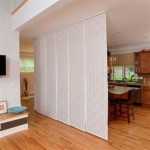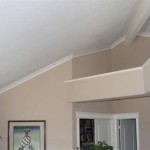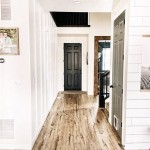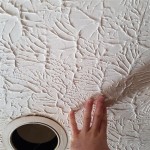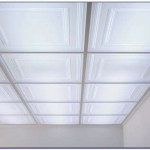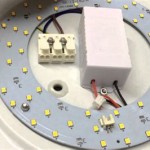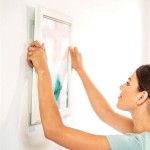How to Remove Water Stains From RV Ceiling Tiles
Water stains on RV ceiling tiles are a common problem for recreational vehicle owners. These stains are not only unsightly, detracting from the overall aesthetic of the interior, but they also indicate a potential underlying issue that needs to be addressed. Addressing the cause of the stain is as critical as removing the stain itself. A water stain indicates a leak, and ignoring a leak can lead to significant damage, including mold growth, structural weakening, and costly repairs. Therefore, prompt action is crucial for maintaining the integrity and value of the RV.
Removing water stains from RV ceiling tiles requires a multi-pronged approach. First, the source of the leak must be identified and repaired. Common culprits include roof seals, window seals, and plumbing connections. Once the leak is fixed, the cleaning process can begin. The specific cleaning method will depend on the type of ceiling tile material and the severity of the stain. This article will outline a comprehensive guide to identifying the cause of water stains, preparing the affected area, and employing various cleaning techniques to effectively remove the stains and restore the appearance of the RV ceiling.
Identifying and Addressing the Source of the Water Stain
Before attempting to clean any water stain, it is imperative to identify and rectify the source of the leak. Failure to do so will result in the stain reappearing, rendering the cleaning efforts futile. Locating the leak can often be a process of elimination. Start by visually inspecting the roof around vents, skylights, air conditioners, and any other roof-mounted accessories. Examine the sealant around these areas for cracks, gaps, or deterioration. Pay close attention to seams and joints, as these are common entry points for water. Furthermore inspect window and door seals, and plumbing fixtures for any signs of leakage.
A common technique for leak detection involves using a garden hose to gently spray sections of the RV roof and walls while an assistant observes the interior ceiling for any signs of water intrusion. Start at the lowest point of the roof and work upwards, allowing gravity to assist in the detection process. If the leak is suspected to be coming from a plumbing fixture, visually inspect the connections and piping for any signs of dampness or corrosion. Addressing the leak might require resealing roof vents and skylights with RV-specific sealant, repairing or replacing damaged window or door seals, or tightening or replacing plumbing connections. Neglecting to address the leak at its source will only lead to recurring water stains and potentially more extensive damage in the future.
Once the source of the water intrusion has been located and repaired, allow the affected area to dry completely before beginning any cleaning procedures. This drying process could take several days or even weeks, depending on the extent of the water damage and the ambient humidity levels. Using a dehumidifier or fan to circulate air can expedite the drying process. It is important to ensure that the ceiling tile is completely dry to prevent mold growth and to allow the cleaning solutions to effectively penetrate and remove the stain.
Preparing the Area for Cleaning
Effective cleaning requires proper preparation of the affected area. Begin by gathering the necessary supplies, tailored to the type of cleaning solution planned. These supplies typically include: a soft-bristled brush or sponge, clean microfiber cloths, a spray bottle (if using a spray-on cleaner), protective gloves, and eye protection. It's also a good idea to have a ladder or step stool for safe access to the ceiling.
Once the cleaning supplies are assembled, protect the surrounding surfaces from potential drips or splatters. Cover furniture, flooring, and walls with drop cloths or plastic sheeting. Proper ventilation is also crucial, especially when using cleaning solutions with strong odors. Open windows and doors to provide adequate airflow. If ventilation is limited, consider using a fan to circulate air and remove fumes. Safety precautions, such as wearing gloves and eye protection, are essential to protect skin and eyes from potential irritation caused by the cleaning solutions.
Before applying any cleaning solution to the entire stained area, it is highly recommended to perform a spot test in an inconspicuous location. This will help determine if the solution will cause any discoloration or damage to the ceiling tile material. Choose a hidden area, such as a corner or behind a cabinet, and apply a small amount of the cleaning solution. Allow it to sit for a few minutes, then wipe it away with a clean cloth. Observe the area for any adverse reactions, such as fading, discoloration, or softening of the tile. If no adverse reactions are observed, proceed with cleaning the stained area. If any damage occurs, try a different cleaning solution or consult with a professional RV cleaning service for advice.
Cleaning Methods for Removing Water Stains
Several cleaning methods can be employed to remove water stains from RV ceiling tiles, with the most appropriate method depending on the severity of the stain and the type of ceiling tile material. For light stains, a simple solution of mild dish soap and warm water may be sufficient. Mix a small amount of dish soap with warm water in a bucket, and lightly dampen a soft-bristled brush or sponge with the solution. Gently scrub the stained area in a circular motion, being careful not to apply too much pressure, which could damage the tile. Wipe away the soapy residue with a clean, damp cloth, and allow the area to air dry.
For more stubborn stains, a solution of white vinegar and water may be more effective. Mix equal parts of white vinegar and water in a spray bottle. Spray the solution onto the stained area, allowing it to sit for a few minutes to penetrate the stain. Gently scrub the area with a soft-bristled brush or sponge, and wipe away the vinegar solution with a clean, damp cloth. The vinegar smell will dissipate as the area dries. Vinegar is a mild acid, so it needs to be tested in an inconspicuous area before using it on the stain.
For particularly challenging stains, a solution of baking soda and water may be necessary. Create a paste by mixing baking soda with water until it forms a thick consistency. Apply the paste to the stained area, and allow it to sit for several hours or even overnight. The baking soda will help to absorb the stain. Once the paste has dried, gently scrape it away with a plastic scraper or spatula, and wipe away any remaining residue with a clean, damp cloth. Baking soda is a mild abrasive, so test in an inconspicuous area first.
In certain cases, mold may accompany the water stain, especially if the leak has been present for a prolonged period. The presence of mold requires a different set of cleaning protocols. A solution of bleach and water can be used to kill mold and remove stains, but it is essential to use this solution with caution and in a well-ventilated area. Mix one part bleach with ten parts water in a spray bottle. Spray the solution onto the moldy area, allowing it to sit for several minutes. Gently scrub the area with a soft-bristled brush or sponge, and wipe away the bleach solution with a clean, damp cloth. Always wear gloves and eye protection when working with bleach, and avoid inhaling the fumes. Ensure that the area is thoroughly dry after cleaning to prevent mold from recurring. It is important to note that bleach may discolor some ceiling tile materials, so a spot test is crucial before applying it to the entire stained area.
Another option for mold remediation is using a commercially available mold and mildew remover. These products are often formulated to kill mold effectively while minimizing the risk of damage to the underlying surface. Follow the manufacturer's instructions carefully when using these products, and always test in an inconspicuous area first. Regardless of the cleaning method used, it is essential to thoroughly dry the cleaned area to prevent further mold growth. Using a dehumidifier or fan can help to speed up the drying process.
If the water stain is extensive or the ceiling tile material is particularly delicate, it may be necessary to consult with a professional RV cleaning service. These professionals have experience in removing water stains from various types of RV surfaces and can employ specialized cleaning techniques and equipment to restore the ceiling to its original condition. They can also identify and address any underlying water damage issues that may not be immediately apparent.
After the water stain has been removed and the ceiling tile has been thoroughly dried, consider applying a sealant to protect the area from future water damage. A sealant can help to prevent water from penetrating the tile and causing new stains. Choose a sealant that is specifically designed for RV use and is compatible with the ceiling tile material; be sure a test is performed in an inconspicuous area first. Applying a sealant is particularly important in areas that are prone to leaks, such as around roof vents and skylights.

Rv Water Damage Repair To Ceiling

Ceiling Fabric Care

Easy Rv Camper Ceiling Repair Refresh Camping

Easy Rv Camper Ceiling Repair Refresh Camping

Fastest Easiest Ceiling Stain Removal Technique Ever No Mess

Easy Rv Camper Ceiling Repair Refresh Camping

Ceiling Stain Removal Rv Log

Fastest Easiest Ceiling Stain Removal Technique Ever No Mess

Fastest Easiest Ceiling Stain Removal Technique Ever No Mess

Easy Rv Camper Ceiling Repair Refresh Camping
Related Posts

